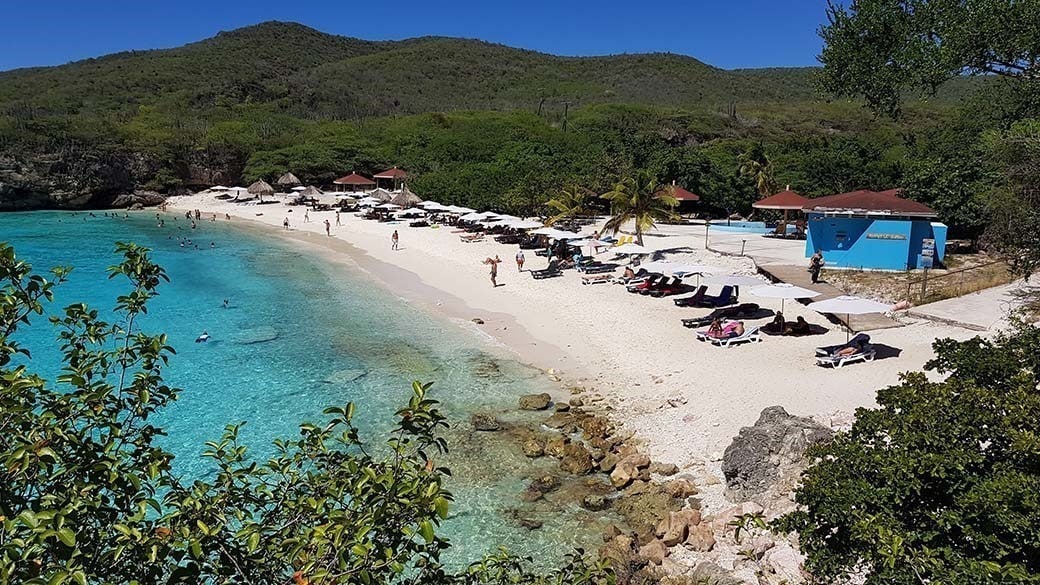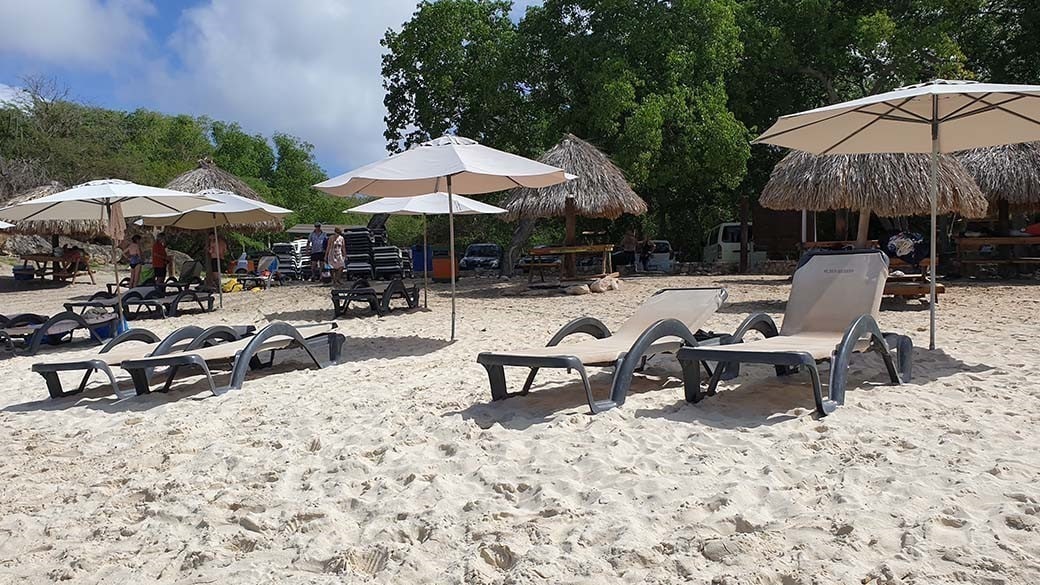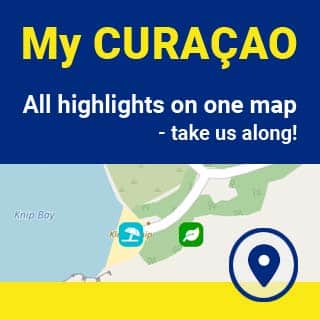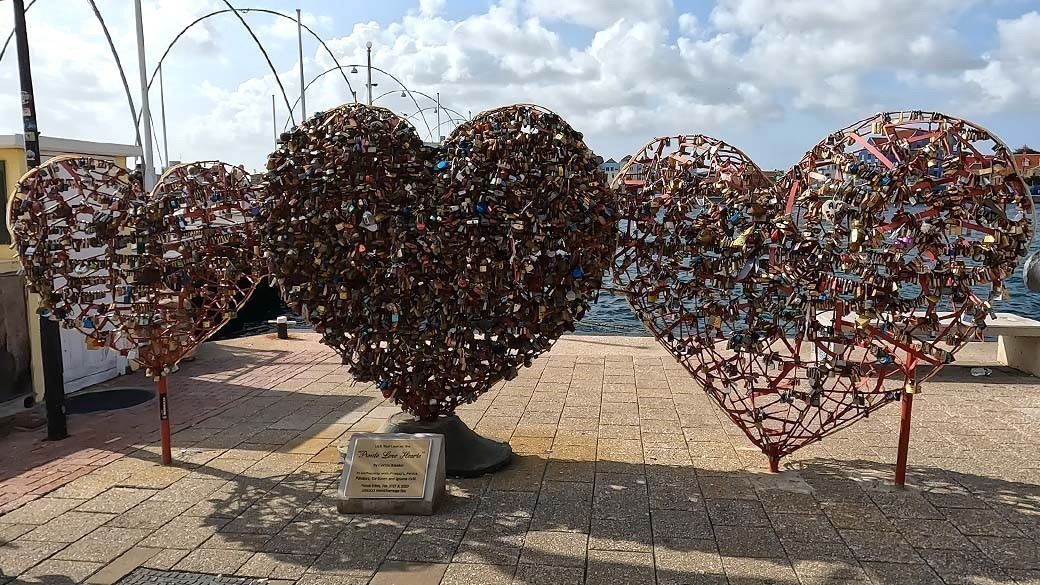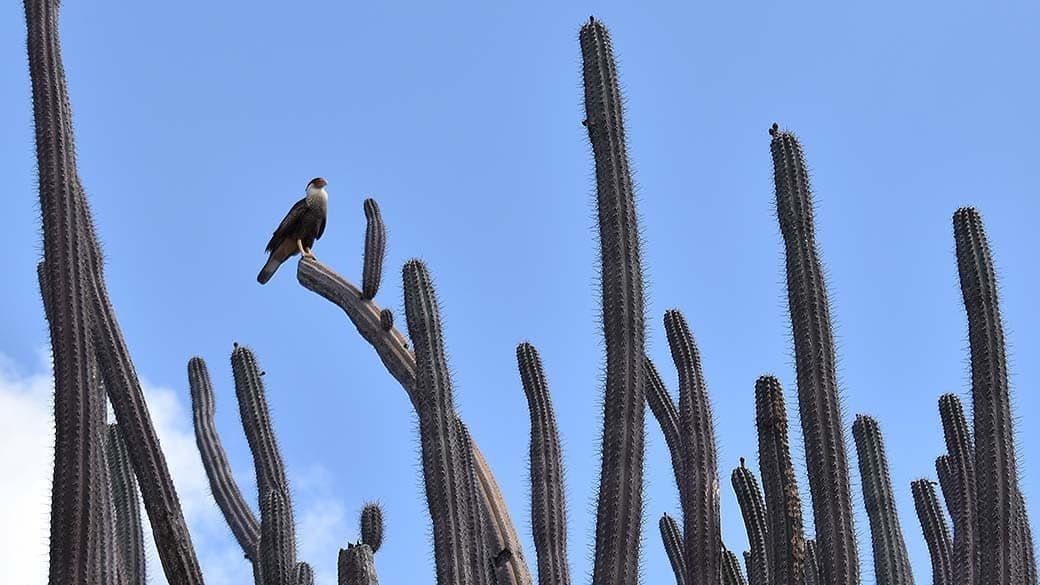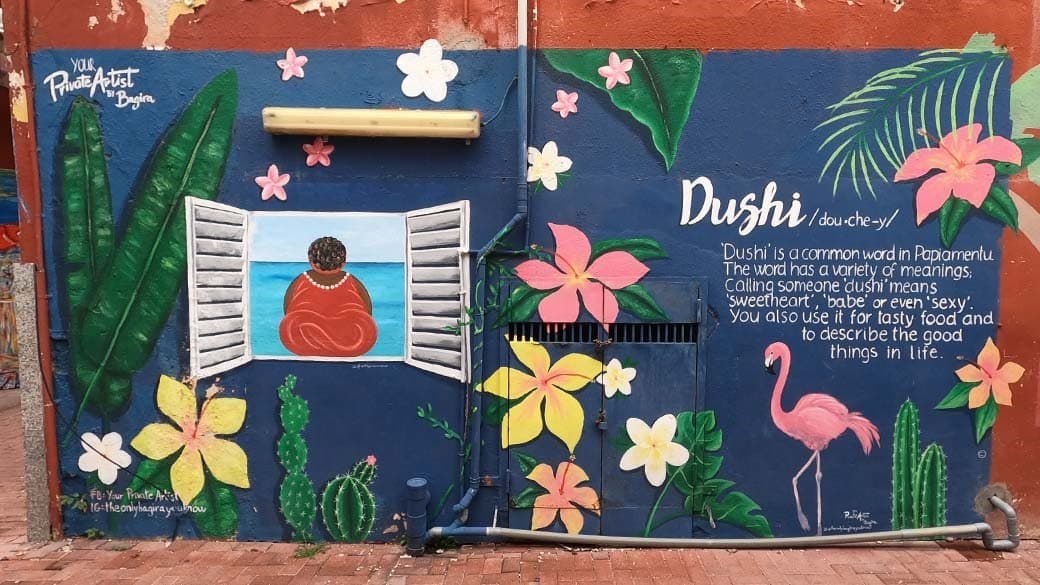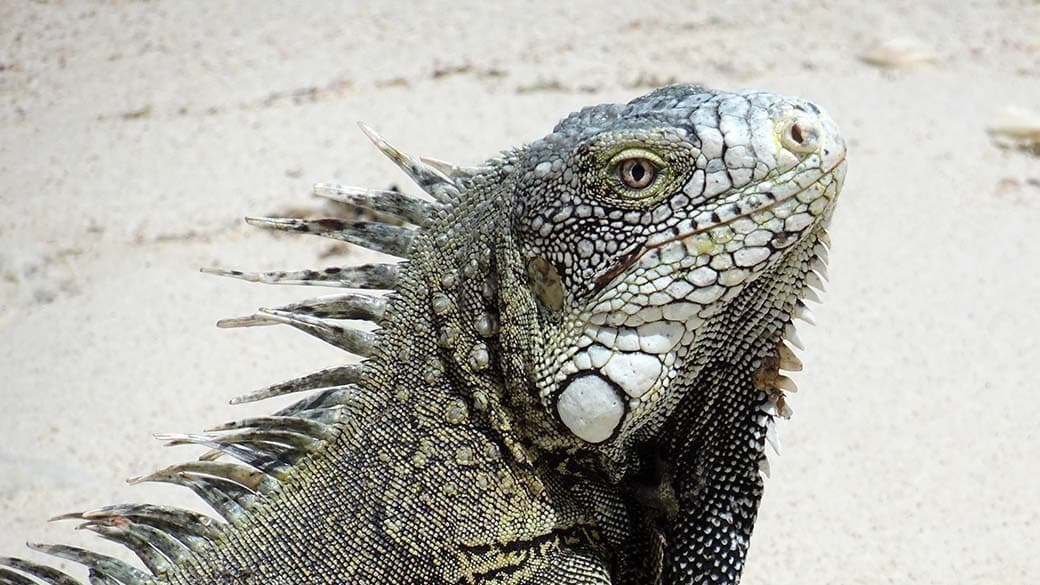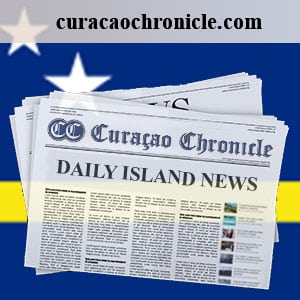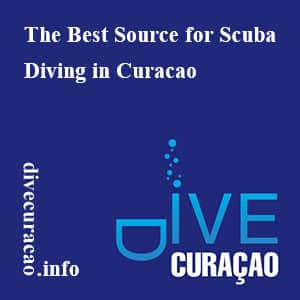Kenepa Tree
The roots of the Kenepa beaches
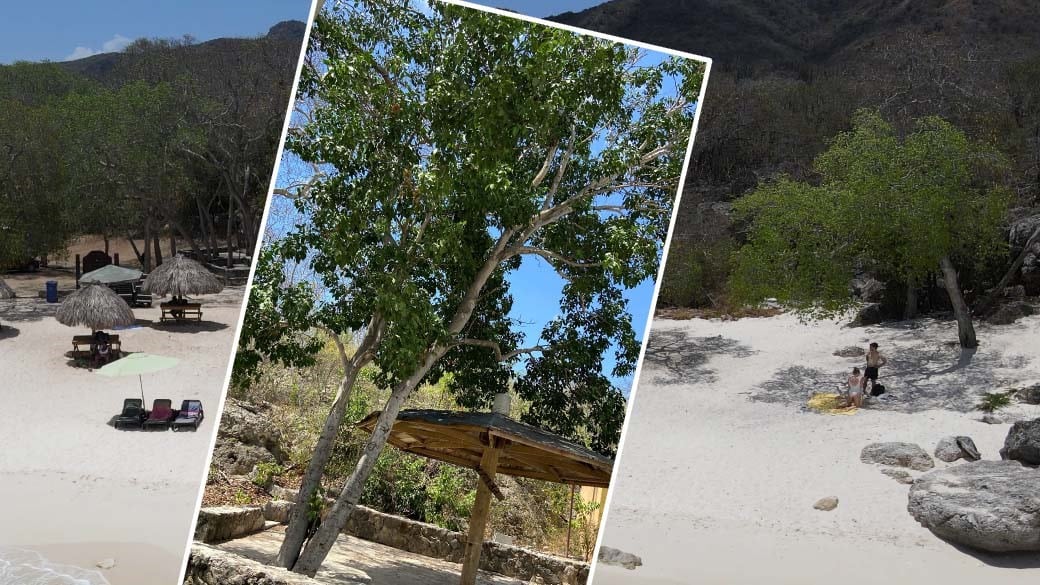
I set out to learn where the name of the Kenepa beaches, Grandi and Chiki (also known as Big and Little Knip), came from. My research revealed that their name traces back to the Kenepa Plantation. Long ago, when the plantation thrived, workers raised livestock, produced sheep’s wool, and cultivated divi-divi tree seeds. The plantation itself was named after the Kenepa trees (South American, Spanish: quenepa). These tall deciduous trees still grow in the area, providing shade on the shores of Kenepa Grandi and Kenepa Chiki. Their edible fruits and impressive size make them a standout feature of the beaches.
On the Trail of the Kenepa Tree
At Little Knip, we saw a Kenepa tree up close for the first time. Jefferson, who rents beach chairs and umbrellas, pointed it out to us. He explained that the tree’s flowering and fruiting don’t follow a specific season. Instead, it depends on when the tree was planted. Each Kenepa tree has its unique rhythm. This makes sense given Curacao’s stable climate, which lacks the pronounced seasonal changes we’re used to in Europe.
Spanish Lime?
The Kenepa tree, scientifically known as Melicocca bijuga, goes by many names, including honeyberry, Spanish lime, and genip. While the tree produces small, lime-like green fruits, they aren’t citrus fruits. These are stone fruits with hard pits, and their sweet-sour orange-yellow flesh can stain clothing.
Unfortunately, we haven’t found any to taste yet. Harvesting the fruit is tricky since the trees can grow up to 65 feet tall. However, we’re determined to keep looking. The Floating Market in Punda, Willemstad, seems like a good place to buy them. If not there, where else?
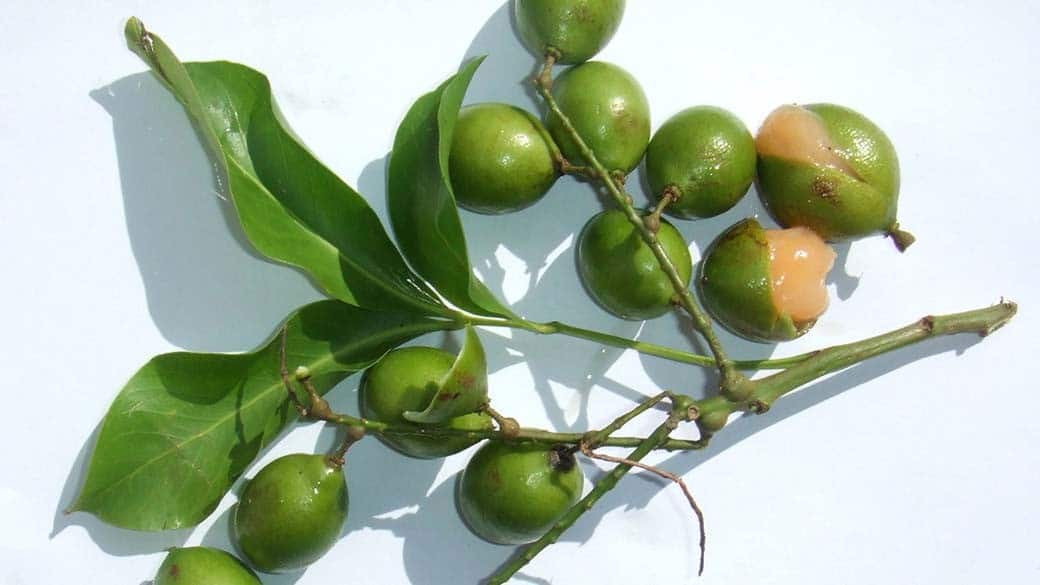
Blätter und Früchte des Kenepa Baums – source: Wikimedia Commons, author Hans B.
Tula’s Rebellion
The historic Knip Mansion aka Landhuis Knip, now home to the Museo Tula, celebrates Curacao’s African cultural heritage. It lies on the road to Westpunt, just past Lagun and Jeremi Beach. If you turn toward Grote or Kleine Knip, you’ll pass the mansion on the way.
In 1795, the largest slave rebellion on the island began here, led by Tula. Refusing to work under oppressive conditions, Tula and his fellow enslaved people fought for their freedom. To learn more about this important event, visit the museum. It’s open daily (except Sundays) from 9 AM to 3 PM, with an entrance fee of just $4.
Grote and Kleine Knip
These two gorgeous beaches are just over half a mile apart. They definitely deserve a visit (or several) during your Curacao vacation. We’ve dedicated separate articles to them, highlighting why they’re such must-see spots.
Do you know the answer? We collected 100+ entertaining questions about Curacao. Have fun!
Quiz Question
What is the genuine Blue Curacao made of?Answer
The original Blue Curacao is made from the Laraha orange and is therefore an orange liqueur.
The Laraha is the result of a miserable attempt to cultivate the Valencia orange on Curacao, which did not work due to the dry climate.
Do you like more? Here is another post you might be interested in:
If you enjoyed this article, we would be very happy if you share it with your friends on social media. Thank you very much!
Fancy the sea? In our Beaches and Snorkeling & Diving sections, your vacation dreams will come true. In the Lifestyle section, we tell you about the colorful Caribbean way of life. You’ll find culinary delights in Restaurants & Bars and in Shopping we show you where you can find great and affordable deals. Wanna an insider tip? Pssst – click quietly!
Kenepa Tree
The roots of the Kenepa beaches

I set out to learn where the name of the Kenepa beaches, Grandi and Chiki (also known as Big and Little Knip), came from. My research revealed that their name traces back to the Kenepa Plantation. Long ago, when the plantation thrived, workers raised livestock, produced sheep’s wool, and cultivated divi-divi tree seeds. The plantation itself was named after the Kenepa trees (South American, Spanish: quenepa). These tall deciduous trees still grow in the area, providing shade on the shores of Kenepa Grandi and Kenepa Chiki. Their edible fruits and impressive size make them a standout feature of the beaches.
On the Trail of the Kenepa Tree
At Little Knip, we saw a Kenepa tree up close for the first time. Jefferson, who rents beach chairs and umbrellas, pointed it out to us. He explained that the tree’s flowering and fruiting don’t follow a specific season. Instead, it depends on when the tree was planted. Each Kenepa tree has its unique rhythm. This makes sense given Curacao’s stable climate, which lacks the pronounced seasonal changes we’re used to in Europe.
Spanish Lime?
The Kenepa tree, scientifically known as Melicocca bijuga, goes by many names, including honeyberry, Spanish lime, and genip. While the tree produces small, lime-like green fruits, they aren’t citrus fruits. These are stone fruits with hard pits, and their sweet-sour orange-yellow flesh can stain clothing.
Unfortunately, we haven’t found any to taste yet. Harvesting the fruit is tricky since the trees can grow up to 65 feet tall. However, we’re determined to keep looking. The Floating Market in Punda, Willemstad, seems like a good place to buy them. If not there, where else?

Blätter und Früchte des Kenepa Baums – source: Wikimedia Commons, author Hans B.
Tula’s Rebellion
The historic Knip Mansion aka Landhuis Knip, now home to the Museo Tula, celebrates Curacao’s African cultural heritage. It lies on the road to Westpunt, just past Lagun and Jeremi Beach. If you turn toward Grote or Kleine Knip, you’ll pass the mansion on the way.
In 1795, the largest slave rebellion on the island began here, led by Tula. Refusing to work under oppressive conditions, Tula and his fellow enslaved people fought for their freedom. To learn more about this important event, visit the museum. It’s open daily (except Sundays) from 9 AM to 3 PM, with an entrance fee of just $4.
Grote and Kleine Knip
These two gorgeous beaches are just over half a mile apart. They definitely deserve a visit (or several) during your Curacao vacation. We’ve dedicated separate articles to them, highlighting why they’re such must-see spots.
Other articles from the “Nature” category that might interest you:
If you enjoyed this article, we would be very happy if you share it with your friends on social media. Thank you very much!
Leave A Comment
Recommended readings from other categories:
Quiz Question
What is the genuine Blue Curacao made of?Answer
The original Blue Curacao is made from the Laraha orange and is therefore an orange liqueur.
The Laraha is the result of a miserable attempt to cultivate the Valencia orange on Curacao, which did not work due to the dry climate.
#withus - our articles at your fingertips on a common map - try it!
Kenepa Tree
The roots of the Kenepa beaches

I set out to learn where the name of the Kenepa beaches, Grandi and Chiki (also known as Big and Little Knip), came from. My research revealed that their name traces back to the Kenepa Plantation. Long ago, when the plantation thrived, workers raised livestock, produced sheep’s wool, and cultivated divi-divi tree seeds. The plantation itself was named after the Kenepa trees (South American, Spanish: quenepa). These tall deciduous trees still grow in the area, providing shade on the shores of Kenepa Grandi and Kenepa Chiki. Their edible fruits and impressive size make them a standout feature of the beaches.
On the Trail of the Kenepa Tree
At Little Knip, we saw a Kenepa tree up close for the first time. Jefferson, who rents beach chairs and umbrellas, pointed it out to us. He explained that the tree’s flowering and fruiting don’t follow a specific season. Instead, it depends on when the tree was planted. Each Kenepa tree has its unique rhythm. This makes sense given Curacao’s stable climate, which lacks the pronounced seasonal changes we’re used to in Europe.
Spanish Lime?
The Kenepa tree, scientifically known as Melicocca bijuga, goes by many names, including honeyberry, Spanish lime, and genip. While the tree produces small, lime-like green fruits, they aren’t citrus fruits. These are stone fruits with hard pits, and their sweet-sour orange-yellow flesh can stain clothing.
Unfortunately, we haven’t found any to taste yet. Harvesting the fruit is tricky since the trees can grow up to 65 feet tall. However, we’re determined to keep looking. The Floating Market in Punda, Willemstad, seems like a good place to buy them. If not there, where else?

Blätter und Früchte des Kenepa Baums – source: Wikimedia Commons, author Hans B.
Tula’s Rebellion
The historic Knip Mansion aka Landhuis Knip, now home to the Museo Tula, celebrates Curacao’s African cultural heritage. It lies on the road to Westpunt, just past Lagun and Jeremi Beach. If you turn toward Grote or Kleine Knip, you’ll pass the mansion on the way.
In 1795, the largest slave rebellion on the island began here, led by Tula. Refusing to work under oppressive conditions, Tula and his fellow enslaved people fought for their freedom. To learn more about this important event, visit the museum. It’s open daily (except Sundays) from 9 AM to 3 PM, with an entrance fee of just $4.
Grote and Kleine Knip
These two gorgeous beaches are just over half a mile apart. They definitely deserve a visit (or several) during your Curacao vacation. We’ve dedicated separate articles to them, highlighting why they’re such must-see spots.
Other articles you might find interesting:
Curacao is alive and things are always changing. What has changed since our last visit? How is your experience? Would you please share your personal experiences with us? Feel free to write your comment under this article and follow us on our social media channels. There you can spontaneously share your personal impressions with us and our community - "sharing is caring". We look forward to your contribution and every new follower!
Leave A Comment
Quiz Question
What is the genuine Blue Curacao made of?Answer
The original Blue Curacao is made from the Laraha orange and is therefore an orange liqueur.
The Laraha is the result of a miserable attempt to cultivate the Valencia orange on Curacao, which did not work due to the dry climate.
#withus - our articles at your fingertips on a common map - try it!



